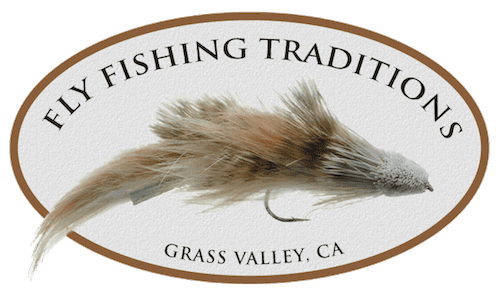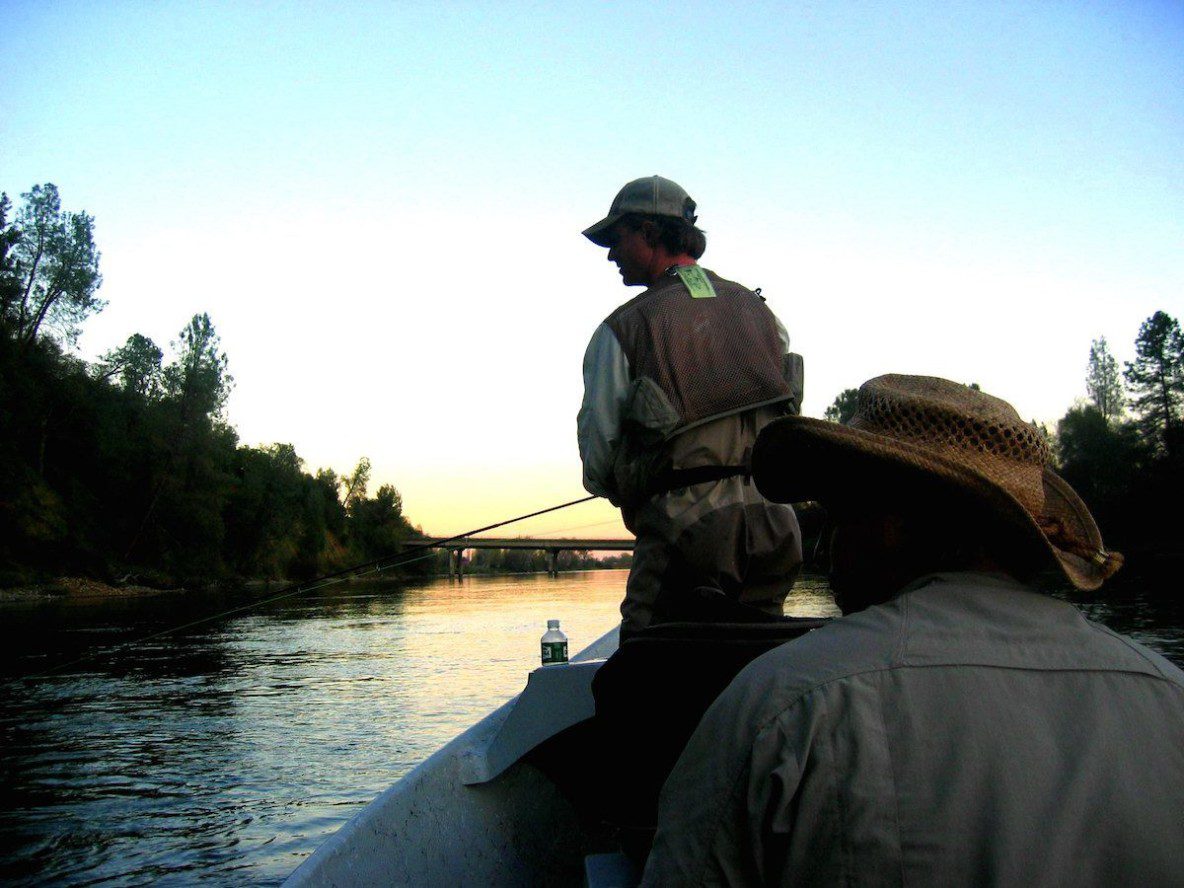When nymphing from a drift boat you are typically casting multiple flies with shot. On the Lower Yuba River which often has good water clarity you also need to add the element of stealth. This means that you often need to be able to cast your nymphing rigg at least 2 rod lengths and more from the boat. This may seem daunting to some. By using a water loading casting technique you will be able to improve your ability to achieve these distances with less tangling when casting shot and multiple flies. We were fishing one day and my son Zack looked at me with a huge smile and a tangled mess of tippet and flies and said, “Look dad, I’ve got a bigger rat’s nest then grandpa.” Using a water load cast can help this from happening.
First I’ll describe an indicator rigg setup that has been successful for me on the Lower Yuba River, the Lower Sacramento River, the Klamath River and many rivers in Montana when side drifting from a drift boat or raft.
Indicator Setup
 It seems like the indicator that I mostly reach for these days is the thingamabobber. It just does the trick easily.
It seems like the indicator that I mostly reach for these days is the thingamabobber. It just does the trick easily.
 When I want to really know where my flies are drifting under my indicator I’ll go to the “Boles Float Right”.
When I want to really know where my flies are drifting under my indicator I’ll go to the “Boles Float Right”.
(a) For most side drifting from a boat I will typically rigg up with an indicator and about 6’ to 9’ of tippet from the indicator to the shot depending on the depth of the run.
(b) I usually rigg up with a tapered 2x x 10’ leader. I prefer to use the tapered leader so I can adjust depth easily.
(c) On the Lower Yuba River and the Lower Sacramento River we have been using a “Thingamabobber”, large size, white color. On drop offs and areas that have changing current speed and depth I prefer a “Boles” indicator in blue or green. The flag on the “Boles” allows you to see where your flies are underneath your indicator and will tell you to;
(1) Either raise or lower the indicator
(2) Mend to speed up or slow down the drift, or
(3) Add or take off shot.
Usually I will choose one or the other and stick with it throughout the day.
Fly Rigging
I’ll run three flies under the indicator, each spaced from 12″ to 18″. The deeper the run the larger the spacing. I use 3x fluorocarbon from the shot to the 1st fly, 4x fluorocarbon from the 1st to the 2nd fly and either 4x or 5x fluorocarbon from the 2nd to the third fly depending on the size of the fly.
Presentation
I believe that the Yuba requires stealth with your presentation and the set-ups for your drift. I usually try to cast my indicator into the desired seam with the length of the cast to be at least 2 rod lengths (18 to 20 feet) from the boat and a lot of times even further than that, closer to 3 rod lengths. (2o to 30 feet). I use a 6 weight 9’6″ Sage XP or Z-Axis and it does just fine. Keep mending as required to keep the indicator moving in a straight line downstream.
Water Load Casting Technique
Water Load Casting – When fishing from a drift boat there is typically little concern for getting caught up when backcasting. This does not mean you shouldn’t “look” first. The best technique for delivering the indicator, shot and flies and if there are not obstructions for your backcast is to water load your back cast prior to your forward cast.
Back Cast – To set up your backcast. You need to think of the mantra, Lift, Look and Launch.
By repeating this mantra you are reminding yourself to;
(1) Lift – Strip your indicator and flies towards the boat and lift the flies out of the water column until you see them up on the surface and then in one fluid motion;
(2) Look – Take a quick look at the back side to see there are no obstructions behind you.
(3) Launch – Lift the indicator and flies out of the water and start you backcast aiming your rod tip over your shoulder.
The cast should be overhead not side arm (parallel to the water). Think of your rod tip as a paint brush and you are painting the ceiling with it. This is another mantra that come in handy (Paint the Ceiling). Continue with your rod tip and point to landing spot on the backcast. Let the indicator and flies come to rest on the water on the backcast.
Forward Cast – before your flies sink behind you repeat the mantra;
(1) Lift – Lift the flies back off the water before they sink to water load the forward cast;
(2) Look – Where you want your flies and indicator to land which will be the seam that you want to fish;
(3) Launch – Start your forward cast over your head just to the side of vertical
Remember to (Paint the Ceiling) with your rod tip on the forward cast over your head or just to the side of vertical.
Deliver the flies and drop your rod tip, make a mend for a dead drift and you’re fishin’.
Summary
Done! Whew. Not as hard as it may sound.
Using this technique will keep your flies from dropping and forming a tailing loop and will eliminate constant tangles with indicator and flies.

